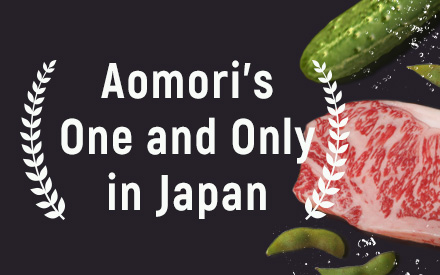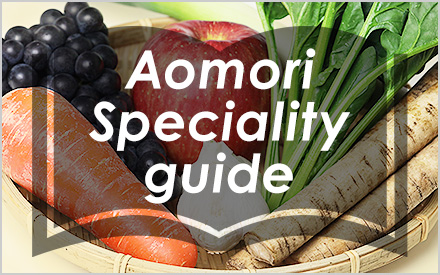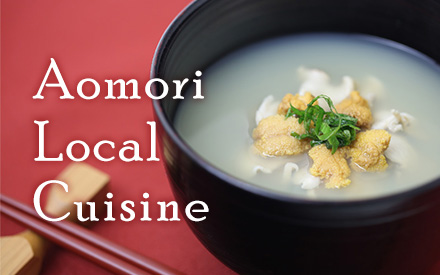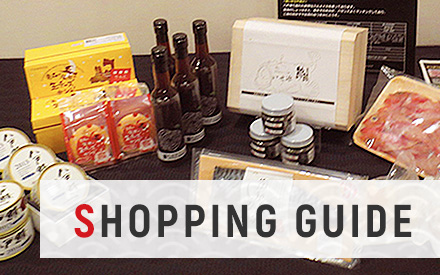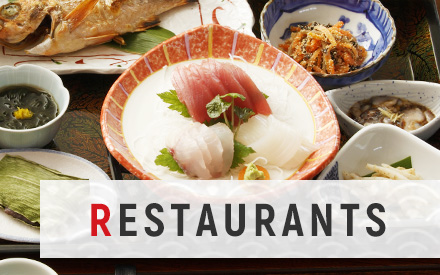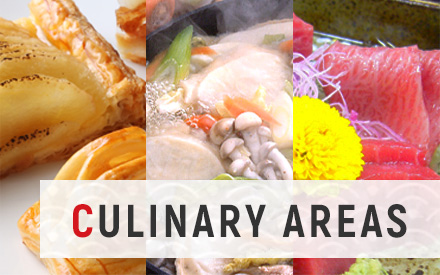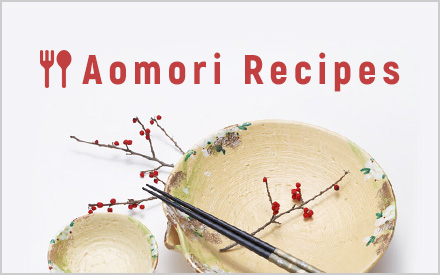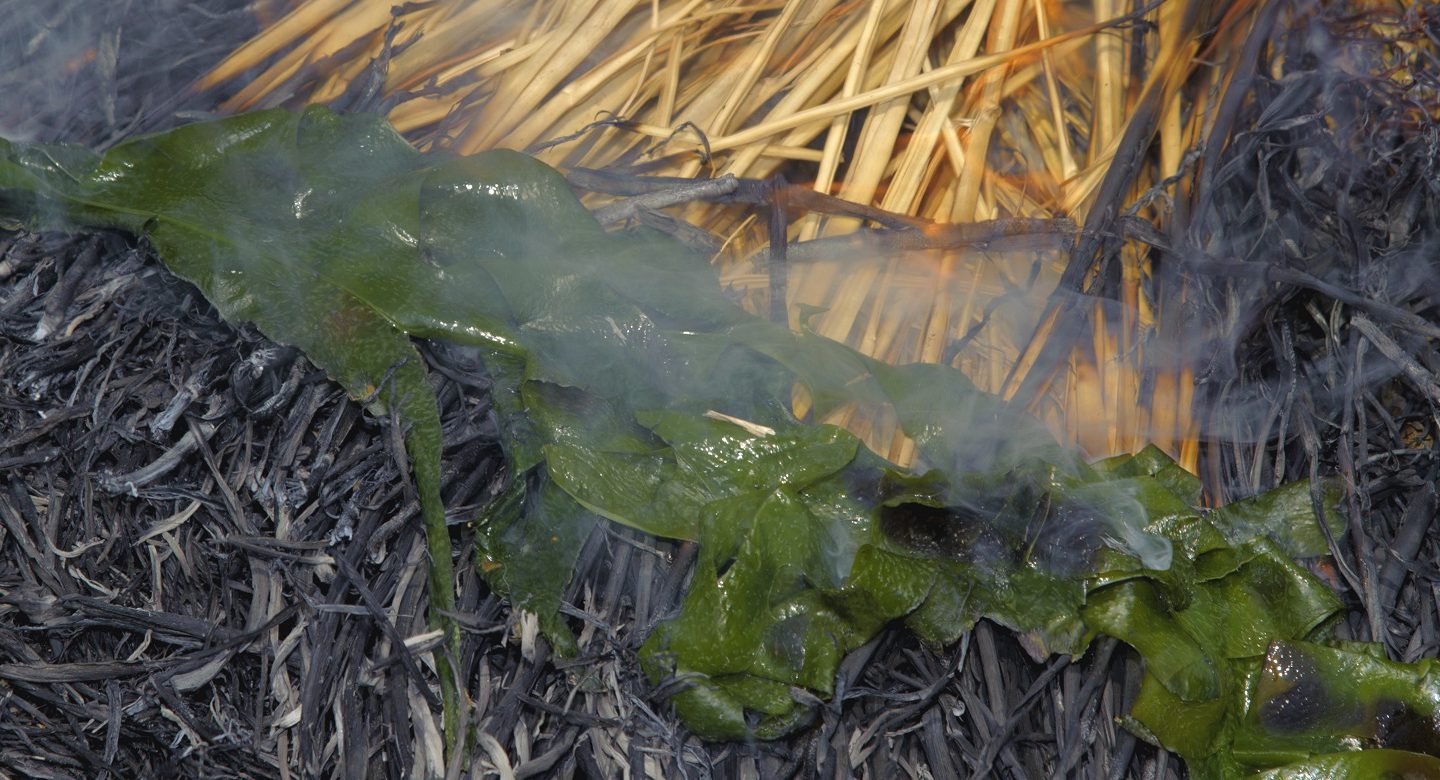
Eating seaweed has long been a part of Japanese culture. Wakame is one such seaweed which has long been an ingredient often used in religious rituals.
In this issue, we will highlight “Yaki-boshi-hai Wakame”, a product that has been revived as a local specialty in the Okutsugaru-Imabetsu region.
What is Yaki-boshi-hai Wakame
Yaki-boshi-hai wakame is produced in the Horo-zuki district in the town of Imabetsu. Straw is burned, and while it is still red, freshly harvested natural wakame is put into the burning straw and covered with ashes. The wakame bakes under the ashes and then dried in the sun. As ashes stay on the seaweed, delicious natural wakame can be enjoyed all year round thanks to the ashes that act as a natural preservative.
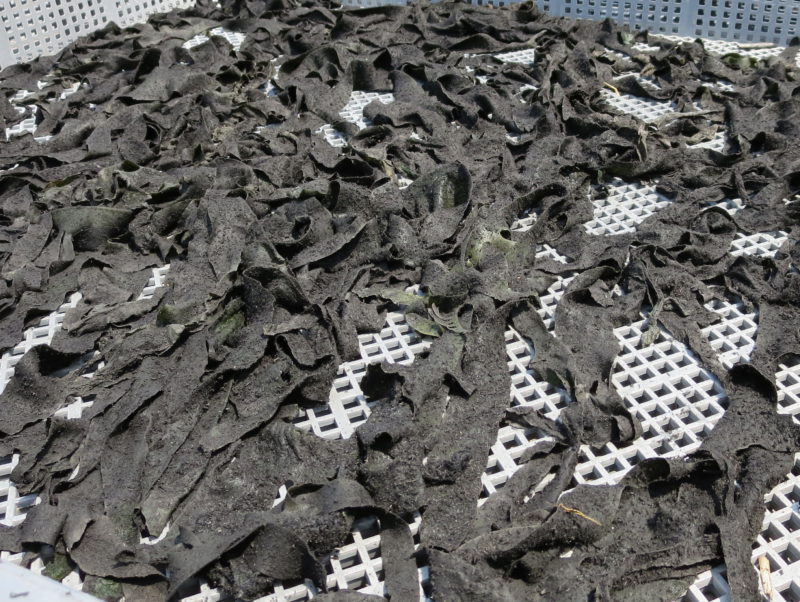
Generally, ash-dried wakame is dried in the sun after being sprinkled with ashes from straw and other grass. The wakame produced in Imabetsu’s Hori-zuki district is unique in that it involves putting the wakame directly into the red-hot burning straw and covering it in ashes as it bakes.
Compared to other dried wakame, Yaki-boshi-hai wakame is bright green, crunchy, and retains its unique aroma for more than one year at room temperature. It uses natural wakame from the Tsugaru Straits, and is characterized by its crunchy texture and aromatic flavor that comes from the bake/drying process.
The Revival of “Yaki-boshi-hai Wakame”
Although it requires more time and effort to produce and prepare the Yaki-boshi-hai wakame, there are many benefits to applying ashes to the wakame. The ash blocks sunlight and preserves the beautiful green color for a longer period of time. In addition, the calcium in the ash prevents the leaves from softening and keeps them crunchy. Drying prevents the growth of microorganisms, and covering with alkaline ash prevents the growth of mold and other fungi even at room temperature.
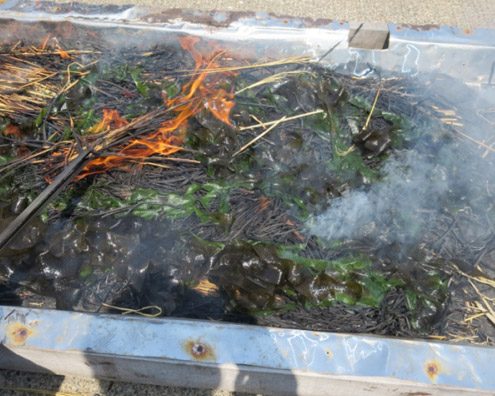
The production of “Yaki-boshi-hai wakame” once ceased due to a lack of successors and the evolution of preservation techniques, despite its history and techniques having been passed down through generations. Thanks to local fishermen, the production of the unique, local specialty Yaki-boshi-hai wakame has been revived. Bringing back the method only found in the Horo-zuki district, Yaki-boshi-hai wakame is now attracting attention as a new specialty product of the Okutsugaru-Imabetsu area.
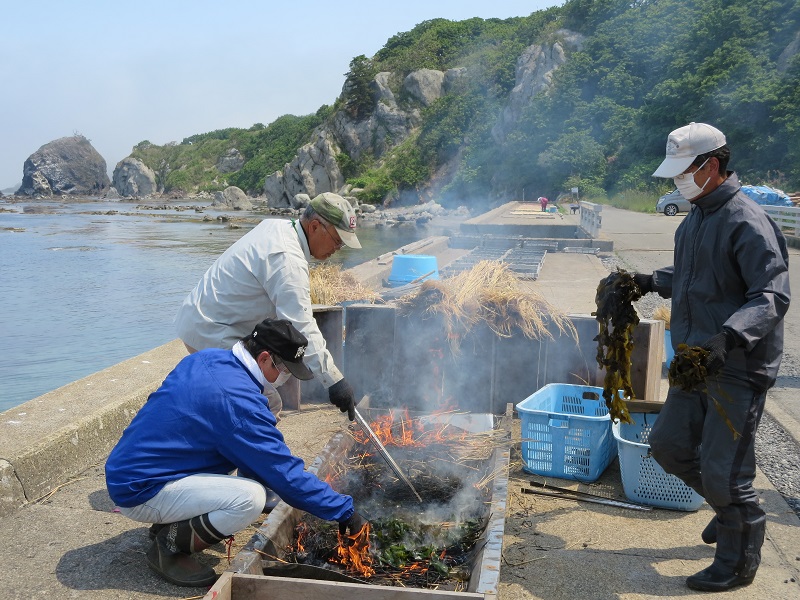
How to Enjoy Yaki-boshi-hai Wakame
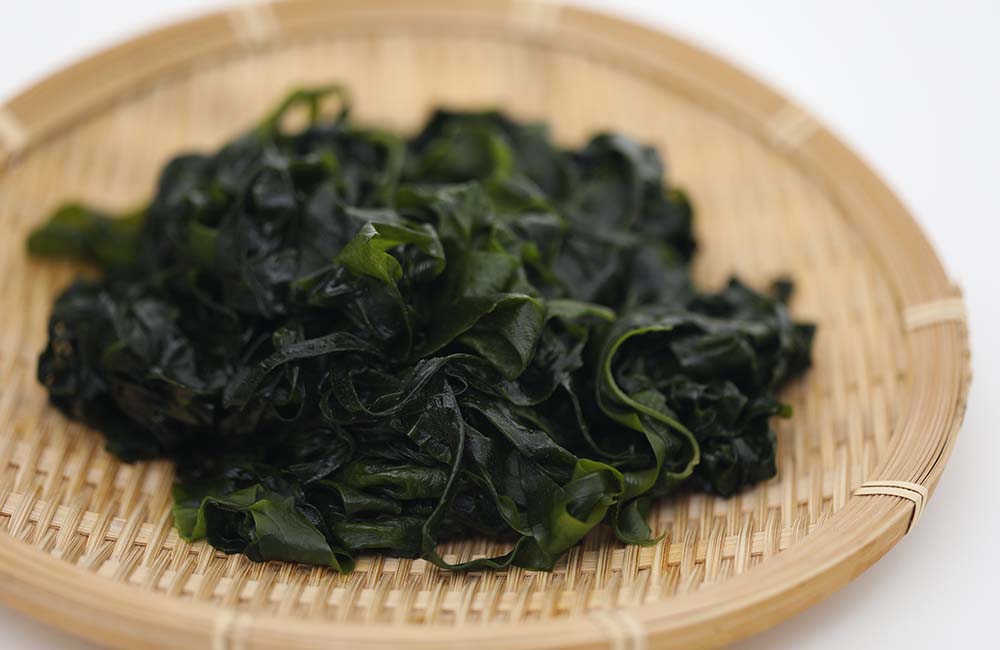
Although it takes a little time to prepare the Yaki-boshi-hai wakame because it comes still covered with ash, you can enjoy the true taste of natural wakame all year round. The best ways to enjoy it are with wasabi soy sauce or ponzu vinegar as sashimi, salad, or carpaccio. You can enjoy the crunchy texture and the original flavor of natural wakame.
Okutsugaru-Imabetsu Seaweed
In addition to wakame, the Okutsugaru-Imabetsu region produces a diverse variety of seaweed, including kelp, which makes an excellent broth, mozuku, an extra crunchy seaweed, as well as other seaweed such as tengusa, iwanori, funori, egonori, matsumo, and aosa. The region has long nurtured a healthy food culture that makes use of locally harvested seaweed. Many active fishermen in the area are over 80 years old, and the reason for their health may well be because they eat seaweed, which are full of natural nutrients.

